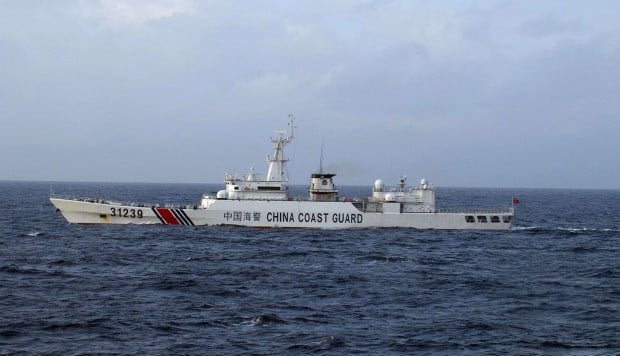 Kanye West’s Year of Breaking Bad
Kanye West’s Year of Breaking Bad
John Caramanica | The New York Times
“Rupture has long been the axis around which Mr. West’s career has turned—where most artists seek to create smooth narratives about themselves and get everyone else to play along, he instead prefers disruptive leaps, quick reframing and firebrand positioning. Stasis is his kryptonite.”
John Berger’s Rare Art Criticism
Elisa Wouk Almino | Hyperallergic
“Berger’s art criticism succeeds, I think, because of its tangibility —it is grounded in human experience, specific historical events, and always the physical marks on the artworks. In art writing, these qualities are rare, as enough of it panders to an art market which has given every indication of carrying on with business as usual under Trump.”
The Erasure of Islam From the Poetry of Rumi
Rozina Ali | The New Yorker
“Rumi has helped the spiritual journeys of celebrities—Chris Martin, Madonna, Tilda Swinton—some of whom incorporated his work into theirs. Aphorisms attributed to Rumi circulate daily on social media, offering motivation… Rumi is often described as the best-selling poet in the United States. He is typically referred to as a mystic, a saint, a Sufi, an enlightened man. Curiously, however, although he was a lifelong scholar of the Koran and Islam, he is less frequently described as a Muslim.”
George Michael and Carrie Fisher: The Week in Pop-Culture Writing
The Murakami Effect
Stephen Snyder | Literary Hub
“Murakami’s work begins and ends in translation. He creates fictions that are both translatable and embody translation in their themes and methods. His work moves between languages and cultures (and, perhaps particularly, into and out of English) with relative ease and fluidity, with few textual and stylistic impediments or difficult cultural contexts, but, rather, various mechanisms and textual markers that seem to invite and insist on translation as both theme and practice.”
Anxiety and A Series of Unfortunate Events
Scaachi Koul | Buzzfeed
“The orphans in Unfortunate Events , though they had each other, had lost both of their parents and were largely left on their own. There was never a reason for them to be hopeful, or to expect anything good, because nothing good came. It wasn’t a cheerful way to live, but at least they were prepared. And I wanted to be prepared for what is, still, inevitable: that people die, and that you will, at some point, be left to fend for yourself; that no one is responsible for you, and people will fail you at every turn. Everyone becomes an orphan at some point. At least by reading, I could find a way to feel less alone in my fears.”
Hidden Figures and the Power of Pragmatism
The Undefeated | Soraya Nadia McDonald
“Besides communicating about the power of common interests, Hidden Figures demonstrates why sneering dismissively at ‘identity politics’ or using the term as a pejorative amounts to little more than hogwash. When you stand in the way of progress for women and people of color, you are only hobbling yourself.”
Emma Stone’s La La Land Performance Transcends Its Biggest Flaw
Caroline Framke | Vox
“Mia is the platonic ideal of an onscreen struggling actor. Nothing about this series of events is unexpected, interesting, or unique to her personality. The only glimmers of individuality to be found come during her first, truncated audition when Mia briefly wells up with sharp, devastated tears; crying on cue is an actor staple, but the breadth of emotions we see flicker across Mia’s face in the span of a few seconds is impressive, a testament to Stone’s talent.”
Netflix’s One Day at a Time Is Unpretentious, Artful, and a Pure Delight
Matt Zoller Seitz | Vulture
“The series still feels like comfort food. That’s because the newness of Penelope and her world is nestled within the tradition of the stage-bound, multi-camera, shot-before-a-live-audience comedy, as well as within the more specific Norman Lear tradition of creating major characters that represent distinct political viewpoints without denying their humanity, then pitting them against each other in verbal combat without giving up on the idealistic notion that there’s common ground to be found somewhere if you look hard enough.”
Kate Beckinsale Is a Legit Movie Star
K. Austin Collins | The Ringer
“Beckinsale’s best roles emphasize this lack of likability. Her peculiar talent is an uncanny ability to seem like she’s all surface, no depth. At least, that’s what we’ve seen when certain directors let her take that idea and run with it. Hence the miracle of her collaboration with Stillman, whose The Last Days of Disco (1998) gave Beckinsale her first seriously great role, and whose more recent Love & Friendship is a comparably rich, virtuosic turn almost 20 years later. Beckinsale is a presence who seems most alive when a director doesn’t take her intelligence for granted—which is rare.”
© Source: http://feedproxy.google.com/~r/TheAtlantic/~3/aQ1biTd6MGU/
All rights are reserved and belongs to a source media.



 As a freely accessible resource for the region, East Asia Forum relies on donations from those who believe in its importance. More information.
As a freely accessible resource for the region, East Asia Forum relies on donations from those who believe in its importance. More information. 
 Kanye West’s Year of Breaking Bad
Kanye West’s Year of Breaking Bad 
 BRISBANE, Australia —
BRISBANE, Australia — 
 The government of Shinzo Abe recently announced record increases in military spending, citing China’s continued claim over disputed territories in the South China Sea and North Korea’s undeterred missile threats and tests.
The government of Shinzo Abe recently announced record increases in military spending, citing China’s continued claim over disputed territories in the South China Sea and North Korea’s undeterred missile threats and tests. 
 「年賀状、ありがトリ――☆」 「ゆるキャラグランプリ(GP)2016」で頂点に立った高知県須崎市のマスコットキャラクター「しんじょう君」に6日までに4763通の年賀状が届いた。 昨年は最終的に1418通だったので、すでに3倍以上。北海道から沖縄まで47都道府県すべての送り主から寄せられた。「ゆるキャラGP優勝おめでとう」「今年もいっぱい見に行きます」「今までもこれからも、しんじょう君が大好きです」など、さまざまな思いがつづられていた。 同市東糺町の須崎小学校体育館で7日あったお披露目で、しんじょう君はファンから贈られたという黄色いくちばしと白い羽、赤い肉ひげ姿で登場。「あけまして おめでトリ――☆ ケッコー届いてうれしいよ――☆ 返事はチキン(きちん)と返すよ――☆」と喜びながらポーズを取ったり、床に敷き詰められた年賀状をのぞき込んだりしていた。(堀内要明)
「年賀状、ありがトリ――☆」 「ゆるキャラグランプリ(GP)2016」で頂点に立った高知県須崎市のマスコットキャラクター「しんじょう君」に6日までに4763通の年賀状が届いた。 昨年は最終的に1418通だったので、すでに3倍以上。北海道から沖縄まで47都道府県すべての送り主から寄せられた。「ゆるキャラGP優勝おめでとう」「今年もいっぱい見に行きます」「今までもこれからも、しんじょう君が大好きです」など、さまざまな思いがつづられていた。 同市東糺町の須崎小学校体育館で7日あったお披露目で、しんじょう君はファンから贈られたという黄色いくちばしと白い羽、赤い肉ひげ姿で登場。「あけまして おめでトリ――☆ ケッコー届いてうれしいよ――☆ 返事はチキン(きちん)と返すよ――☆」と喜びながらポーズを取ったり、床に敷き詰められた年賀状をのぞき込んだりしていた。(堀内要明)
 札幌市円山動物園は6日、オオカンガルーのメス「ウメ」(5歳)が死んだと発表した。カンガルー舎の餌箱を覆う網目に鼻先か首をはさまれるなどした可能性が高いという。 同園によると、飼育員が6日朝、餌箱のそばで横たわって死んでいるウメを見つけた。解剖の結果、首の骨の亜脱臼による脊髄(せきずい)の損傷が死因とみられる。カンガルーは網目に鼻先を突っ込んで干し草を引っ張り出して食べる。はさまった網目から逃れようと暴れるなどし、ショック死した可能性が考えられるという。 餌箱の老朽化に伴って昨秋、縦17センチ×横8センチの網目から10センチ四方の網目に変えていた。旧サイズは製造中止で入手できなかったという。当面、現在の餌箱の使用を中止する。 ウメは2011年12月に円山動物園で誕生。7日には園内に献花台を設置した。
札幌市円山動物園は6日、オオカンガルーのメス「ウメ」(5歳)が死んだと発表した。カンガルー舎の餌箱を覆う網目に鼻先か首をはさまれるなどした可能性が高いという。 同園によると、飼育員が6日朝、餌箱のそばで横たわって死んでいるウメを見つけた。解剖の結果、首の骨の亜脱臼による脊髄(せきずい)の損傷が死因とみられる。カンガルーは網目に鼻先を突っ込んで干し草を引っ張り出して食べる。はさまった網目から逃れようと暴れるなどし、ショック死した可能性が考えられるという。 餌箱の老朽化に伴って昨秋、縦17センチ×横8センチの網目から10センチ四方の網目に変えていた。旧サイズは製造中止で入手できなかったという。当面、現在の餌箱の使用を中止する。 ウメは2011年12月に円山動物園で誕生。7日には園内に献花台を設置した。
 集大成の試合でも、やはり東福岡は強かった。2年前に先輩が残した最多得点記録を13点塗り替えて3冠。最近10年で6度優勝の強豪にあって、歴代最強の印象すら漂わせた。 「相手に合わせず、自分たちのやりたいようにやった」とCTB森。磨いた技術とスピードを正面からぶつけて、東海大仰星の堅守を砕いた。前半19分、自陣から森が相手を次々かわしながら60メートルを走って先制トライ。強烈な個の力を印象付けた。 後半に同点とされても、わずか3分後に突き放す。同13分、ピンチを切り抜けた後に自陣からCTB堀川が50メートルを独走。その3分後にも堀川のトライで加点した。準々決勝と準決勝では追う展開で、終盤に逆転勝ち。主将のロック箸本は「ピンチでも信頼し合い、役割を果たすという気持ちが増してる」と苦しい経験が生きたことを強調した。 「どんな状況でも力が出せるようでないといけない。接戦ではフィジカルが生きる」の信念で、藤田監督は例年以上にチームを鍛えた。今年から個別に細かくメニューを組み立てて量も増やし、鍛えるほどに「自信と粘りが生まれた」(箸本)。 表彰式の後、控室で「あしたって練習あるよね」と選手たちから自然と言葉が出た。尽きぬ向上心が、フィフティーンに栄光をもたらしたのは間違いない。(2017/01/07-19:31)
集大成の試合でも、やはり東福岡は強かった。2年前に先輩が残した最多得点記録を13点塗り替えて3冠。最近10年で6度優勝の強豪にあって、歴代最強の印象すら漂わせた。 「相手に合わせず、自分たちのやりたいようにやった」とCTB森。磨いた技術とスピードを正面からぶつけて、東海大仰星の堅守を砕いた。前半19分、自陣から森が相手を次々かわしながら60メートルを走って先制トライ。強烈な個の力を印象付けた。 後半に同点とされても、わずか3分後に突き放す。同13分、ピンチを切り抜けた後に自陣からCTB堀川が50メートルを独走。その3分後にも堀川のトライで加点した。準々決勝と準決勝では追う展開で、終盤に逆転勝ち。主将のロック箸本は「ピンチでも信頼し合い、役割を果たすという気持ちが増してる」と苦しい経験が生きたことを強調した。 「どんな状況でも力が出せるようでないといけない。接戦ではフィジカルが生きる」の信念で、藤田監督は例年以上にチームを鍛えた。今年から個別に細かくメニューを組み立てて量も増やし、鍛えるほどに「自信と粘りが生まれた」(箸本)。 表彰式の後、控室で「あしたって練習あるよね」と選手たちから自然と言葉が出た。尽きぬ向上心が、フィフティーンに栄光をもたらしたのは間違いない。(2017/01/07-19:31)
 写真特集:秘境めぐる高級ハイキング6選
写真特集:秘境めぐる高級ハイキング6選 


